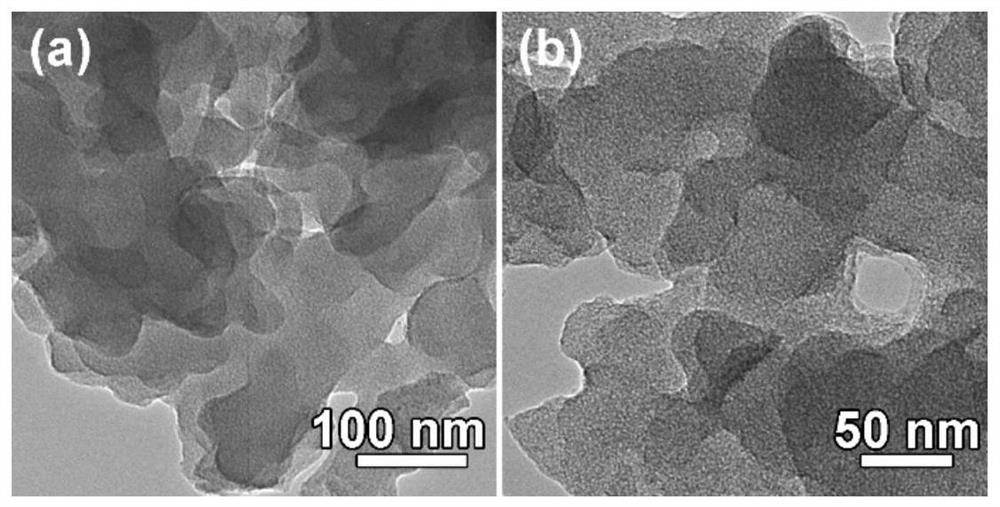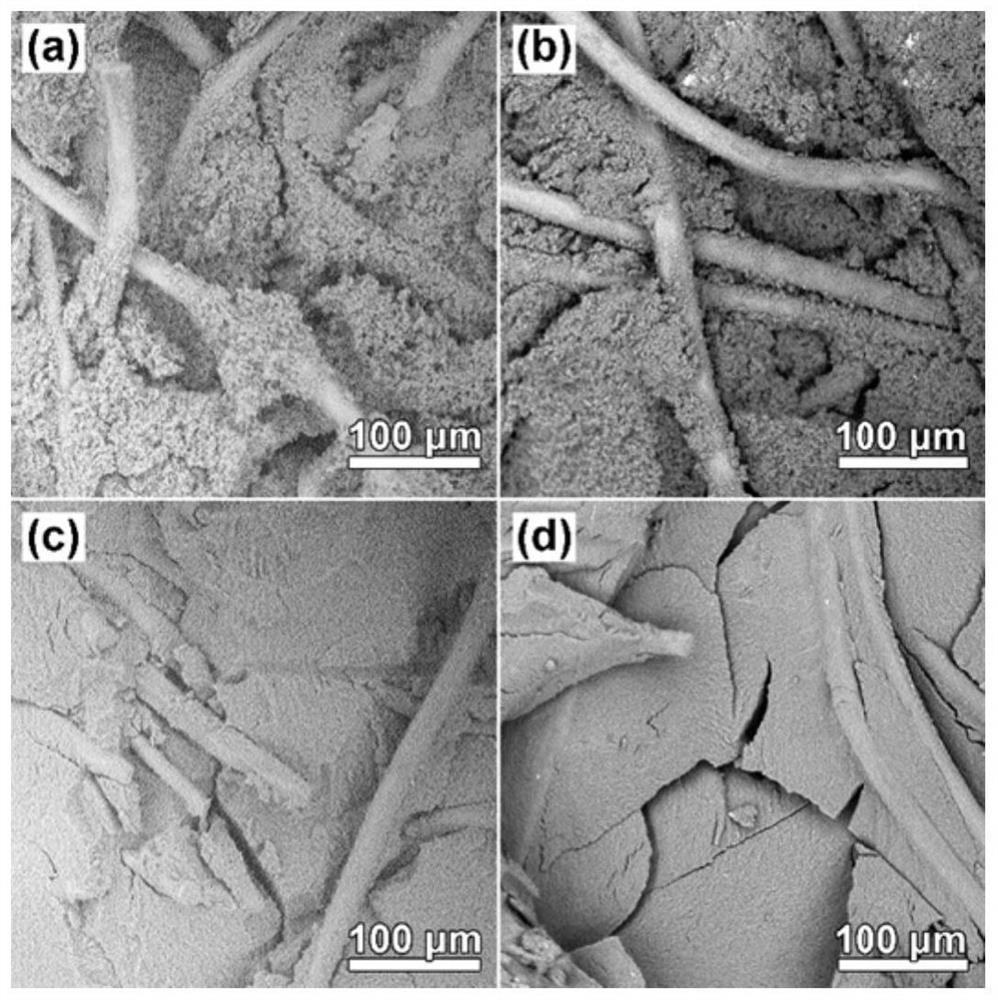A kind of low-density ablative thermal insulation composite material and preparation method thereof
A composite material and low-density technology, applied in the field of carbon materials, can solve the problems of restricting large-scale production, harsh process conditions, and long preparation cycle
- Summary
- Abstract
- Description
- Claims
- Application Information
AI Technical Summary
Problems solved by technology
Method used
Image
Examples
Embodiment 1
[0042] A certain amount of prepared thermosetting phenolic resin and curing agent-paraformaldehyde were respectively weighed, added into a reaction kettle containing a certain amount of ethanol, and mechanically stirred until completely dissolved to obtain a phenolic resin solution. Wherein the mass ratio of phenolic resin to ethanol is 1:20, and the mass ratio of phenolic resin to paraformaldehyde is 20:1.
[0043] Set the density to 150Kg / m 3 The polypropylene-based carbon fiber felt was cut into a size of 150mm×150mm, and placed in a 100°C oven for heat treatment for more than 6 hours; the heat-treated carbon fiber felt was laid flat in a stainless steel mold customized by the laboratory, and the above-mentioned phenolic resin solution was used in the Slowly impregnate the carbon fiber felt under normal temperature and pressure until the phenolic resin impregnating solution can completely soak the carbon fiber felt, then seal the mold, place it in an oven at 80°C, undergo a...
Embodiment 2
[0045] A certain amount of prepared thermosetting phenolic resin and curing agent-hexamethylenetetramine were respectively weighed, added into a reaction kettle containing a certain amount of ethanol, and mechanically stirred until completely dissolved to obtain a phenolic resin solution. Wherein the mass ratio of phenolic resin to ethanol is 1:10, and the mass ratio of phenolic resin to hexamethylenetetramine is 10:1.
[0046] Set the density to 150Kg / m 3 The polypropylene-based carbon fiber felt was cut into a size of 150mm×150mm, and placed in a 100°C oven for heat treatment for more than 6 hours; the heat-treated carbon fiber felt was laid flat in a stainless steel mold customized by the laboratory, and the above-mentioned phenolic resin solution was used in the Slowly impregnate the carbon fiber felt under normal temperature and pressure until the phenolic resin impregnating solution can completely soak the carbon fiber felt, then seal the mold, place it in an oven at 80°...
Embodiment 3
[0048] A certain amount of prepared thermosetting phenolic resin and curing agent-paraformaldehyde were respectively weighed, added into a reaction kettle containing a certain amount of ethanol, and mechanically stirred until completely dissolved to obtain a phenolic resin solution. Wherein the mass ratio of phenolic resin to ethanol is 1:2, and the mass ratio of phenolic resin to paraformaldehyde is 5:1.
[0049] Set the density to 150Kg / m 3 The polypropylene-based carbon fiber felt was cut into a size of 150mm×150mm, and placed in a 100°C oven for heat treatment for more than 6 hours; the heat-treated carbon fiber felt was laid flat in a stainless steel mold customized by the laboratory, and the above-mentioned phenolic resin solution was used in the Slowly impregnate the carbon fiber felt under normal temperature and pressure until the phenolic resin impregnating solution can completely soak the carbon fiber felt, then seal the mold, place it in an oven at 80°C, undergo a s...
PUM
| Property | Measurement | Unit |
|---|---|---|
| thickness | aaaaa | aaaaa |
| density | aaaaa | aaaaa |
| density | aaaaa | aaaaa |
Abstract
Description
Claims
Application Information
 Login to View More
Login to View More - R&D
- Intellectual Property
- Life Sciences
- Materials
- Tech Scout
- Unparalleled Data Quality
- Higher Quality Content
- 60% Fewer Hallucinations
Browse by: Latest US Patents, China's latest patents, Technical Efficacy Thesaurus, Application Domain, Technology Topic, Popular Technical Reports.
© 2025 PatSnap. All rights reserved.Legal|Privacy policy|Modern Slavery Act Transparency Statement|Sitemap|About US| Contact US: help@patsnap.com



